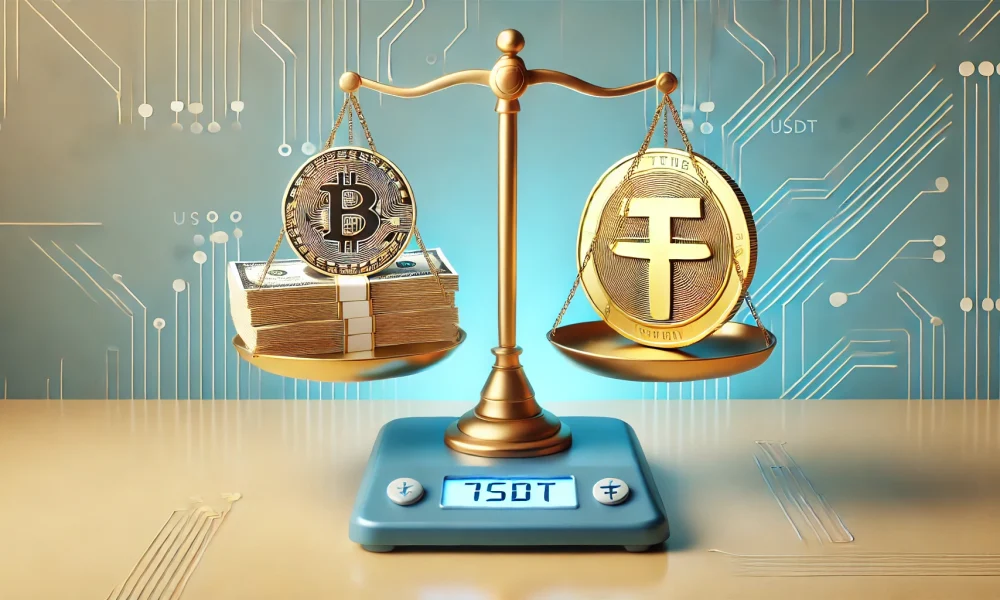According to a recent report by S&P Global Ratings, the U.S. is edging closer to establishing a regulatory framework for stablecoins, a move that could significantly impact digital finance. With three distinct proposals currently under consideration, the debate is gaining traction, and many believe that regulation could drive stablecoin adoption to new heights.
A Step Toward Stability
Stablecoins, which are digital assets pegged to traditional currencies like the U.S. dollar, have been a cornerstone of the crypto economy. Yet, the lack of regulatory clarity in the U.S. has slowed their adoption, particularly among institutional investors. In contrast, Europe has already taken steps to regulate stablecoins through the Markets in Crypto-Assets Regulation (MiCA), which went into effect in June 2024.
Each of the three U.S. proposals aims to enforce strict compliance standards on stablecoin issuers. These include:
- Maintaining reserves of high-quality, liquid assets such as cash, short-term U.S. Treasury securities, and insured deposits.
- Segregating reserves from the issuer’s own funds to protect consumer interests.
- Requiring monthly transparency reports and independent audits by registered public accounting firms.
- Implementing risk management protocols for interest rate fluctuations, operational stability, and cybersecurity threats.
Federal vs. State Oversight: The Key Debate
One of the biggest distinctions between the proposals is whether regulation should be handled at the federal or state level. One proposal suggests that the Office of the Comptroller of the Currency (OCC) should oversee issuers holding over $10 billion in assets, while smaller issuers could opt for state-level oversight, provided it aligns with federal guidelines. Another proposal calls for a two-year moratorium on endogenously collateralized stablecoins (ECS) while regulators conduct further studies on their risks and viability.
Why It Matters
Stablecoins play a growing role in both decentralized finance (DeFi) and traditional finance. The market capitalization of stablecoins has surged from $160 billion to $230 billion in just six months, underscoring their increasing relevance in global transactions.
Regulatory clarity could unlock even more use cases, such as:
- Institutional Adoption: Companies and financial institutions could integrate stablecoins into their operations, using them for cross-border transactions and digital bond issuances.
- On-Chain Transactions: Stablecoins can facilitate faster, more efficient payments within blockchain ecosystems, reducing reliance on volatile cryptocurrencies.
- Emerging Market Stability: In countries facing monetary instability, stablecoins offer a safe haven for savings and remittances.
What’s Next?
Once a regulatory framework is finalized, we can expect a shift in the stablecoin landscape. Many users and institutions will likely transition from unregulated to regulated stablecoins, favoring those that comply with transparency and security measures.
Andrew O’Neill, Digital Assets Managing Director at S&P Global Ratings, stated: “In our view, the role of stablecoins will continue to evolve and could eventually lead to more integration between traditional finance and decentralized finance, for example in the case of cross-border payments, the tokenization of real-world assets (RWA), or the issuance of digital bonds. The lack of a consensus about the tools that should be used to bring money natively on-chain is among the main factors that hinder the development of digital bonds and RWA tokenization.”
This statement highlights the long-term significance of stablecoins beyond their current use in payments and trading. The potential for real-world asset tokenization could transform financial markets, providing a more transparent, liquid, and efficient means of transferring ownership of assets like real estate, equities, and bonds. However, regulatory uncertainty remains a barrier to achieving these advancements.
A well-defined framework could be the key to unlocking mainstream institutional participation, leading to greater adoption and innovation in digital finance. Additionally, such a framework could provide a significant boost to digital securities, also known as security tokens or RWA (real-world assets). These tokenized securities can represent ownership in traditional financial instruments, including stocks, bonds, and commodities, bringing increased liquidity and efficiency to the market.
Final Thoughts
Momentum for U.S. stablecoin regulation is building, and its outcome could reshape the financial landscape. With institutional interest growing and the stablecoin market expanding rapidly, the regulatory decisions made today will determine how digital assets evolve in the years to come.
As the industry moves forward, the introduction of a structured regulatory framework may bridge the gap between decentralized finance and traditional banking, unlocking new opportunities in cross-border transactions, asset tokenization, and financial inclusion. Investors, businesses, and policymakers should closely monitor developments in stablecoin regulation, as its implications will extend far beyond cryptocurrency markets into the broader financial ecosystem.
